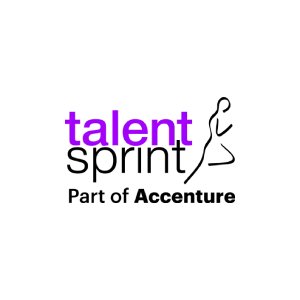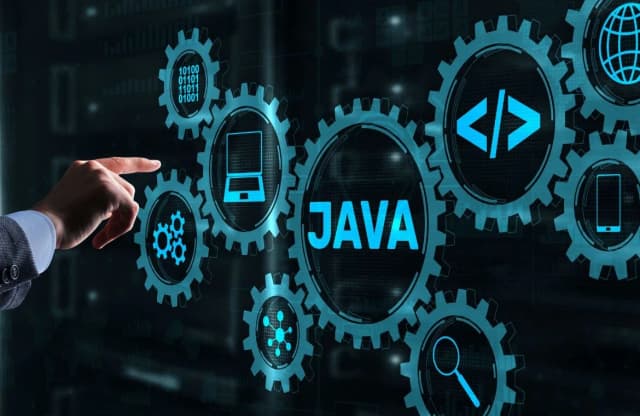Full Stack Developer Salary in India 2025

India is all set to be one of the global tech leaders, and full stack developers are playing an important role in making it a reality. This is increasing the demand for full stack developers in the markets. As per the survey by Naukri, there is a 30% year-on-year growth in the demand for full stack developers in the Indian job market.
There are several hidden factors that have full stack developer salaries - from your tech stack choices to where you work. Let's explore the hidden elements that will affect your earning potential as a full stack developer in 2025.
This knowledge will help you plan your next career move better, whether you want to switch careers or grow in your current role. Understanding what drives these salary differences can help shape your professional path effectively.
Salary Journey of A Full Stack Developer
A full stack developer goes up with years on the job.
As per Glassdoor India, Fresh graduates usually start with ₹3-3.5 LPA, while Java full stack developers with 1-3 years of experience get ₹4-6 LPA. Mid-career professionals (4-6 years) see a pay jump to ₹6-11.2 LPA. Senior developers can earn ₹10-21 LPA or even more.
While experience counts, it's not everything. You surely will grow in your career with experience; however, your technical skills, employer, job location, job framework, and continuous learning and upskilling significantly impact your career growth journey.
Let’s explore them in the section.
Beyond Experience: What Else Impacts Full Stack Developer Salary
Your experience as a full stack developer sets the base for your paycheck, but there are several hidden factors that most developers don't see. Here are some hidden factors that are going to impact your salary, too:
Technical Skills
Your technical skills play a huge role in determining your salary. The frameworks you know can change your pay by a lot - developers who know AngularJS make about ₹9.2 LPA, while Python specialists earn around ₹3.5 LPA, as per the data on Glassdoor.
Job Location
Where you work makes a huge difference in your pay. Companies located in Indian tech hubs like Mumbai, Delhi, Bengaluru, and Hyderabad are likely to pay more compared to the companies located in smaller towns. These companies compete for good talent; thus, they are willing to pay more.
Indian cities show remarkable salary differences. Bangalore, also known as India’s Silicon Valley, comes first in the list of cities paying the highest salaries, followed by Hyderabad, Mumbai, Pune, Chennai, and Delhi.
Work Model
Remote work has changed how companies pay developers. You can now work from anywhere and still get good opportunities, which is quite contradictory to the above point. As you need not relocate to get good pay, you can work from the comfort of your house and still earn better than developers working in big cities.
In one of his interviews, Rajiv Malhotra, Director of Talent Acquisition at Cognizant, stated:
While tech hubs like Bangalore and Hyderabad offer higher salaries, remote work has blurred these geographical boundaries. Many Indian developers are now earning global salaries by working for international companies.
So, you know the trick!
Employer
The size and type of company you work for can really boost your earnings. Big tech companies, funded startups, and multinational corporations usually offer better packages than smaller companies. Your industry matters, too - you'll earn more in finance, e-commerce, and software development compared to other fields.
Negotiation and People Skills
Knowing how to negotiate sets apart developers with similar skills. Those who check market rates and express their worth confidently usually get better offers. Sometimes, being ready to walk away from a low offer is your best negotiating tool.
People skills matter more than ever for your pay. Good communication, leadership potential, and problem-solving make you more valuable, especially for senior positions.
Skill Amplifiers to Boost Your Salary as Full Stack Developer
Let's talk about what really boosts your salary as a full stack developer beyond just technical experience. Here's what actually impacts your paycheck the most.
Your technical skills are the foundation of earning more. Here are the technical skills that pay the most:
- Front-end expertise: HTML, CSS, JavaScript, React.js, Angular, Vue.js
- Back-end proficiency: Node.js, Express.js, Django, Spring Boot
- Database knowledge: SQL databases (PostgreSQL, MySQL) and NoSQL options (MongoDB)
- DevOps capabilities: Docker, Kubernetes, Jenkins, AWS deployment
What else can you do?
Work on your soft skills! Your soft skills are just as vital when negotiating salary. Companies value developers who excel at communication, teamwork, analytical thinking, and problem-solving. These abilities help you tackle complex projects and handle multiple responsibilities, which often leads to better pay.
Should you invest in certifications? Well, it depends. Employers care more about seeing your skills in action than just looking at credentials. All the same, having certifications in cloud platforms or specialized frameworks can help you stand out when competition is fierce.
Contribute to open-source projects! Surprisingly, it can boost your salary, too. Working on projects of all sizes shows real-world experience and builds an impressive portfolio. This proof of your abilities gives you more leverage during salary talks.
Side Hustling: Secret Income Streams
Want to earn more than your regular paycheck? Side hustles give great ways to create extra income streams.
Freelancing remains the most available option. Platforms like Toptal let you set your rates and work remotely with flexible schedules. Java developers can earn between $17-$35 per hour on Upwork. Most developers can manage their time well.
Building digital assets can be quite profitable. Apps with in-app purchases keep bringing in money without constant work. You can also create educational content through blogs, YouTube channels, podcasts, or online courses.
Some high-earning options you can think about include:
- Affiliate Marketing: You can earn commissions by promoting tech products through your referral links.
- Bug Bounty Programs: Find software vulnerabilities and earn rewards.
- Website/App Flipping: Build, improve, and sell digital properties at a profit.
These side hustles will help you make more money than your peers.
Final Thoughts!
Full stack developer salaries depend on more than simple experience metrics. Many factors work together to shape what you can earn in this field.
Tech hubs like Mumbai, Bangalore, and Hyderabad offer higher compensation than smaller cities. Your location makes a big difference. Moreover, large companies typically pay better packages than smaller organizations, which is another significant factor.
However, since the Covid-19 pandemic, the work model has changed. The introduction of remote working has made it easier for foreign companies to outsource their work. Working for foreign companies can tremendously increase your paycheck.
You can also explore other streams of earnings and increase your overall income.
If you’re a first-time job seeker, you should consider enrolling in a course like Java Full Stack Development Course. This course will not only equip you with the right technical knowledge and soft skills but improve your credentials.

TalentSprint
TalentSprint is a leading deep-tech education company. It partners with esteemed academic institutions and global corporations to offer advanced learning programs in deep-tech, management, and emerging technologies. Known for its high-impact programs co-created with think tanks and experts, TalentSprint blends academic expertise with practical industry experience.



